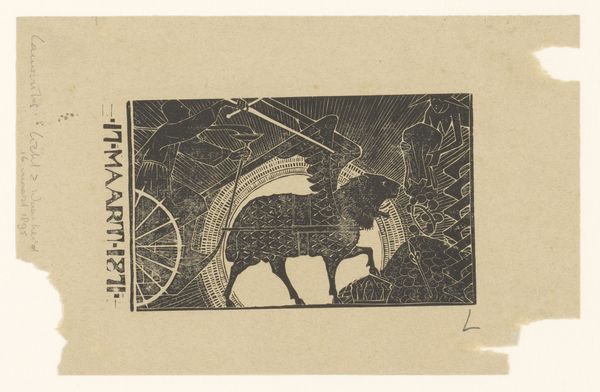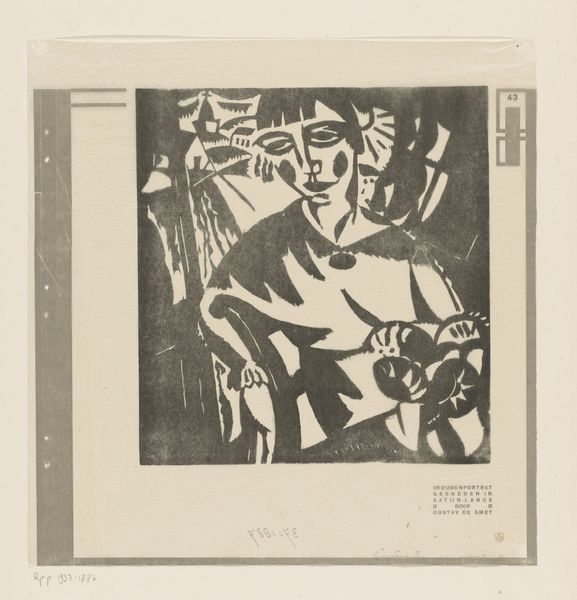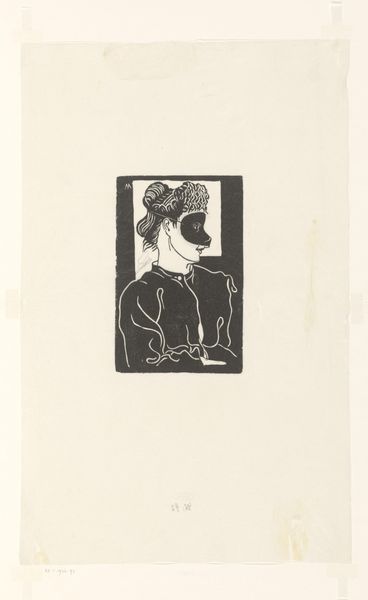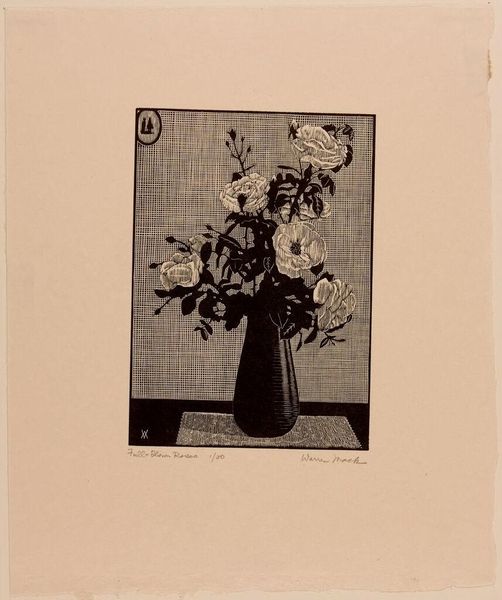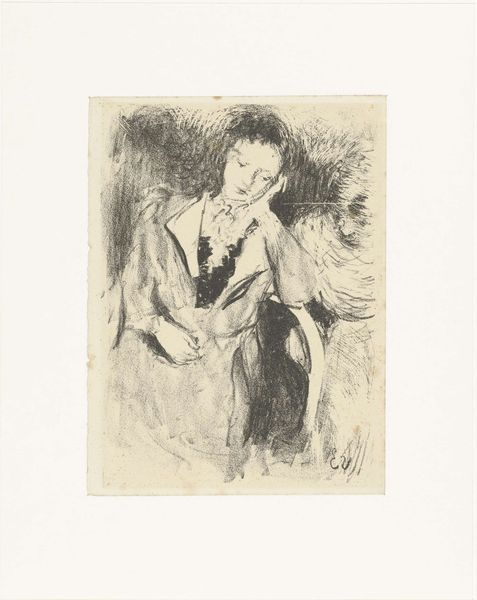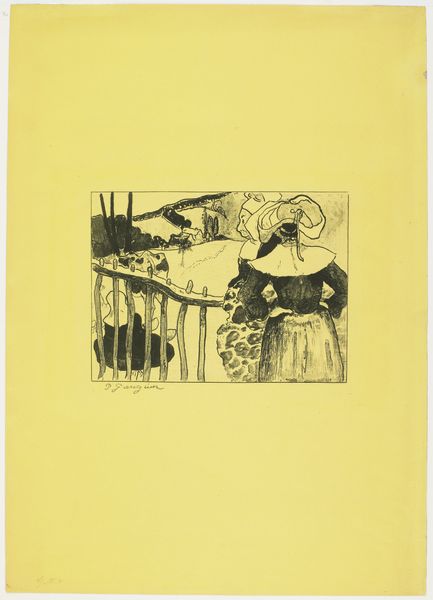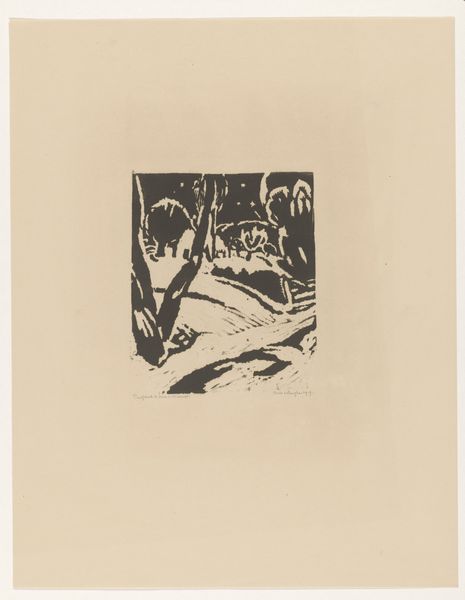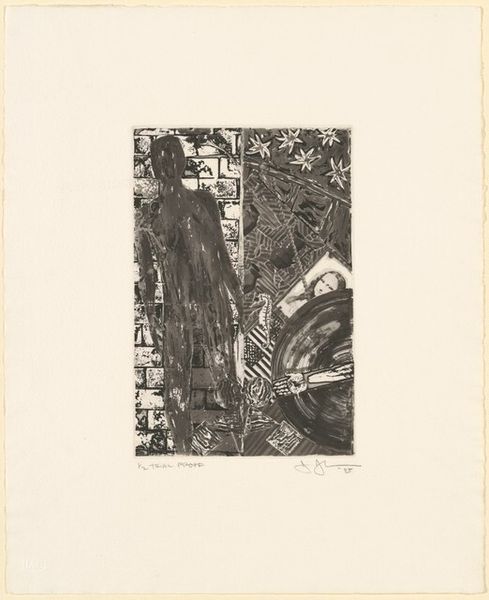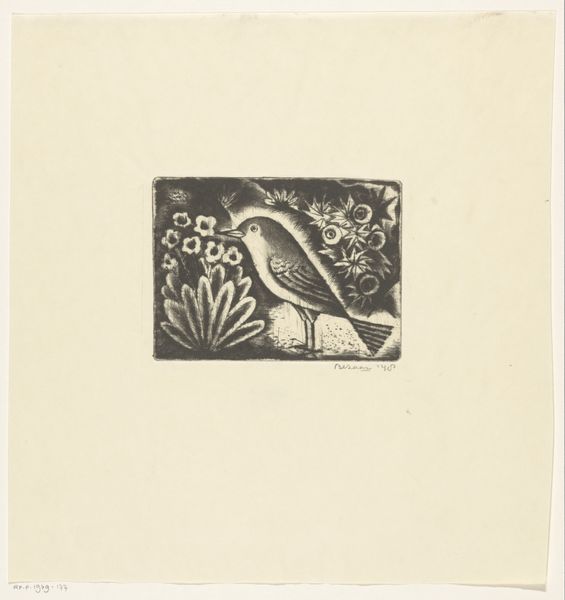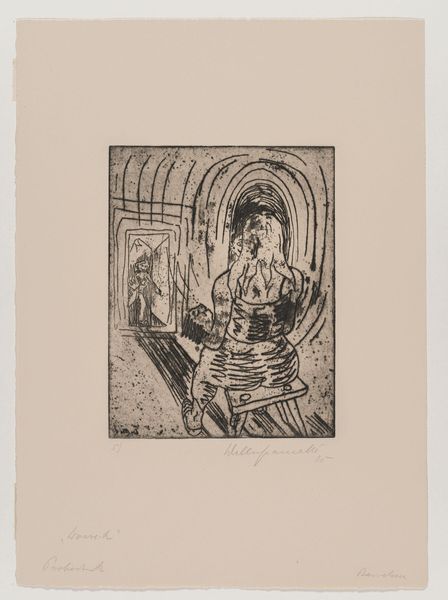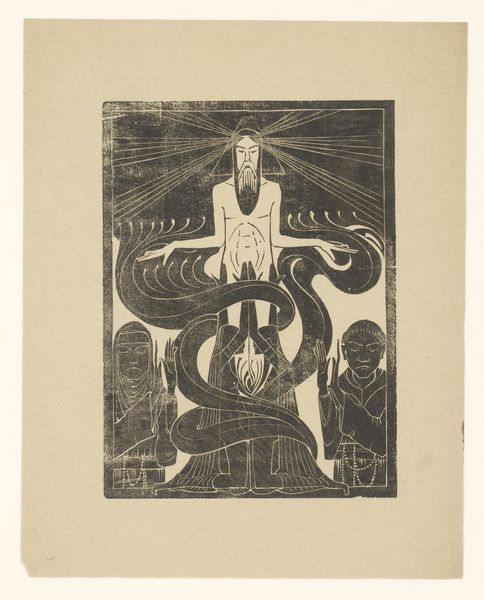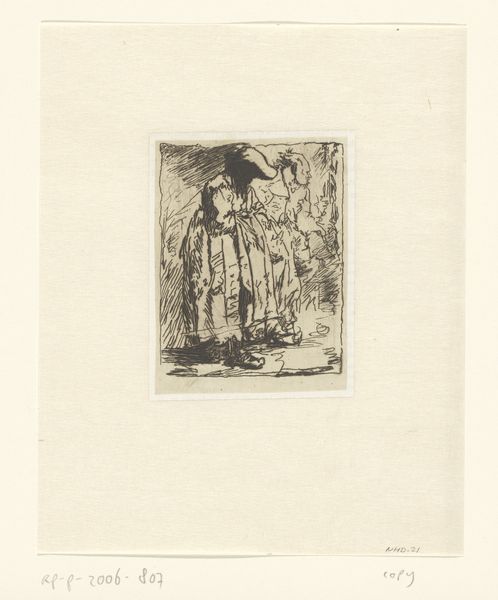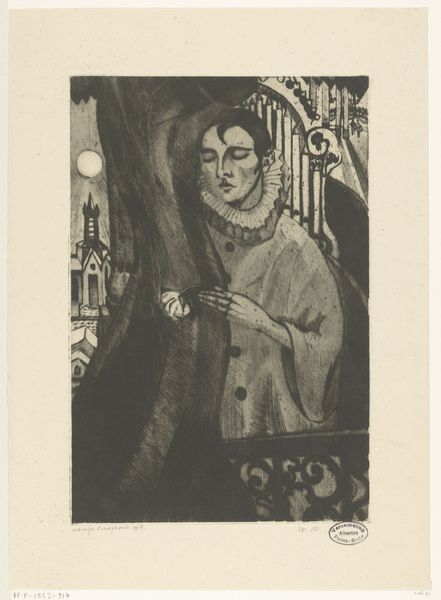
print, woodcut
#
portrait
# print
#
old engraving style
#
figuration
#
pen-ink sketch
#
woodcut
#
symbolism
Dimensions: height 140 mm, width 111 mm
Copyright: Rijks Museum: Open Domain
Curator: The woodcut, "Geschiedenissen van gezag", which translates to "Stories of Authority," was created in 1895 by Karel Petrus Cornelis de Bazel. Editor: The composition immediately strikes me as strikingly stark—a very geometric pattern of solid black against the cream of the paper. The flatness gives it an almost iconic quality. Curator: Iconographic indeed! De Bazel was deeply engaged in the symbolic language of his time. As a socialist architect and designer, he likely aimed to challenge and perhaps reimagine prevailing notions of authority through art. The looming central figure certainly evokes a dominating presence. Editor: Visually, it's all about line and shape. Notice the repetition of triangles and curved forms—it is the way these are woven to form a visual dance that dictates the balance of positive and negative space, it lends a static feel. But that geometric repetition can also have a mesmerizing effect. Curator: The placement of ravens, or are they perhaps crows, adds another layer. Often associated with wisdom and memory, as well as ill omen, they are a critical symbol in fin-de-siècle artwork like this. The relationship between those figures is particularly interesting, aren't they presenting someone? An acknowledgement of power, perhaps? Editor: There's something hieratic about it. All that linear abstraction forces us to engage in pattern recognition. Do you think the hand gesture indicates respect, maybe a secret code? Curator: Possibly. Consider this piece alongside the era's wider discussions about governance. Perhaps de Bazel is questioning the established social order and suggesting the rise of new figures, new stories about what authority truly means for ordinary people. Editor: A potent interpretation. Personally, I’m still intrigued by its overall form and balance of light and dark, its static form which speaks to some very different types of artwork at the same time. Curator: It certainly gives food for thought, and underscores art's important part in larger conversations about the social order.
Comments
No comments
Be the first to comment and join the conversation on the ultimate creative platform.
